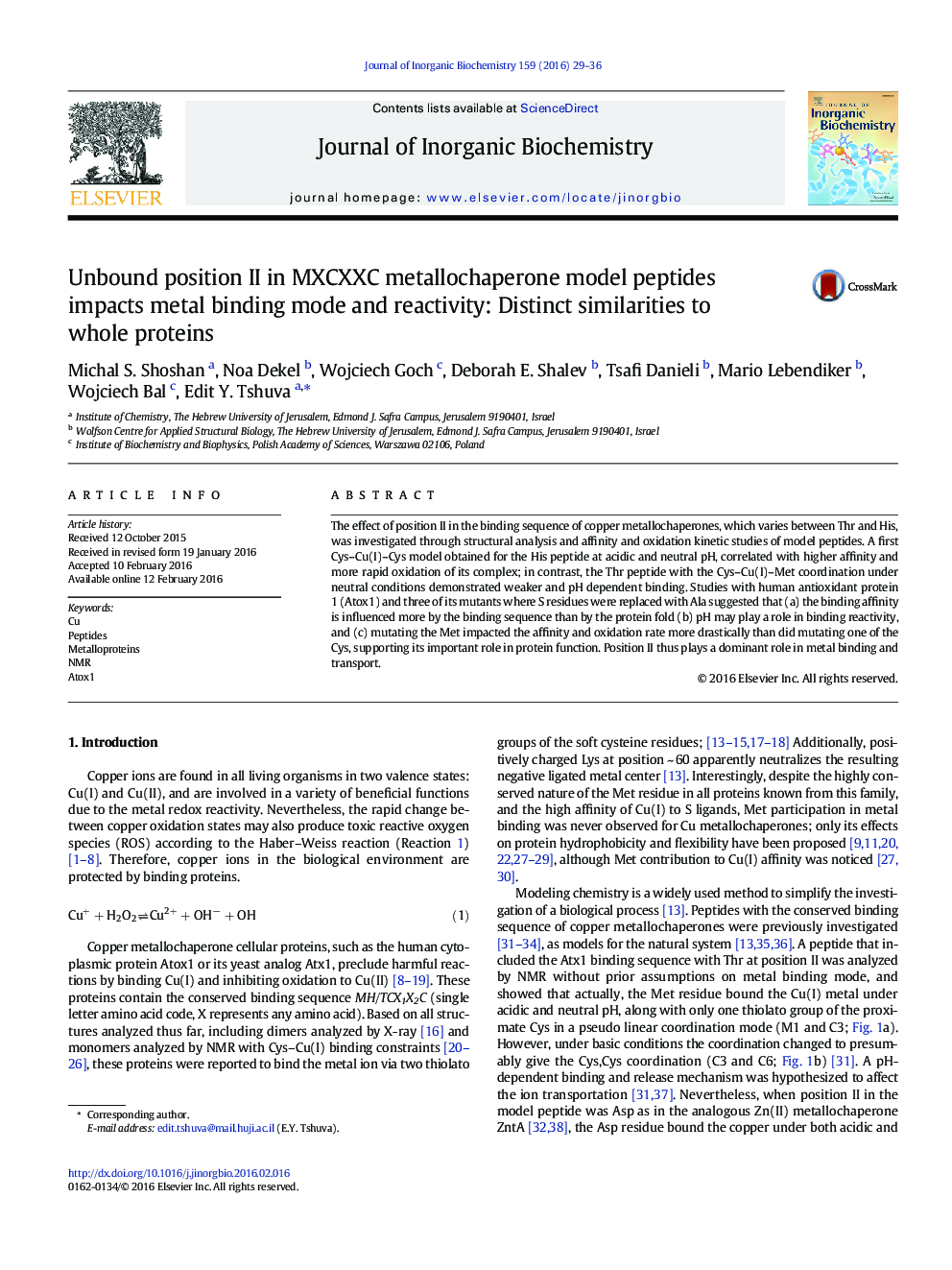| کد مقاله | کد نشریه | سال انتشار | مقاله انگلیسی | نسخه تمام متن |
|---|---|---|---|---|
| 1315828 | 1499428 | 2016 | 8 صفحه PDF | دانلود رایگان |

• Metallochaperone model peptide with His at position II shows Cys–Cu–Cys binding.
• Lower affinity for the Thr peptide reflects weaker binding of Cys,Met.
• Mutants of antioxidant 1 (Atox1) protein show higher impact of Met vs. Cys6 on affinity.
• pH plays a role in determining binding mode and reactivity.
The effect of position II in the binding sequence of copper metallochaperones, which varies between Thr and His, was investigated through structural analysis and affinity and oxidation kinetic studies of model peptides. A first Cys–Cu(I)–Cys model obtained for the His peptide at acidic and neutral pH, correlated with higher affinity and more rapid oxidation of its complex; in contrast, the Thr peptide with the Cys–Cu(I)–Met coordination under neutral conditions demonstrated weaker and pH dependent binding. Studies with human antioxidant protein 1 (Atox1) and three of its mutants where S residues were replaced with Ala suggested that (a) the binding affinity is influenced more by the binding sequence than by the protein fold (b) pH may play a role in binding reactivity, and (c) mutating the Met impacted the affinity and oxidation rate more drastically than did mutating one of the Cys, supporting its important role in protein function. Position II thus plays a dominant role in metal binding and transport.
Position II in metallochaperone model peptides, whether Thr or His, affects binding mode, Cu affinity, and oxidation rate. Met binding for the Thr peptide under neutral-acidic conditions agrees with lower affinity, and together with affinity drop in a Met-mutated mettalochaperone proteins, imply that Met binding is possible under particular conditions.Figure optionsDownload as PowerPoint slide
Journal: Journal of Inorganic Biochemistry - Volume 159, June 2016, Pages 29–36